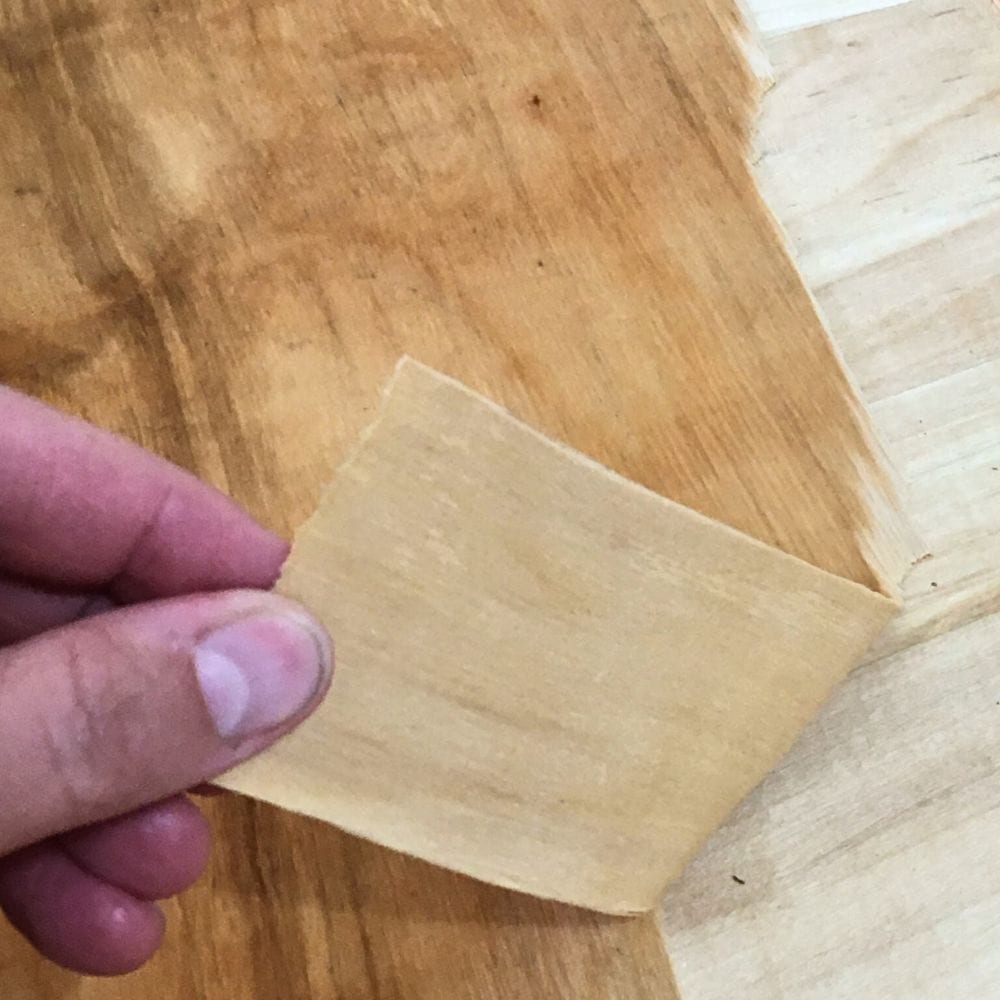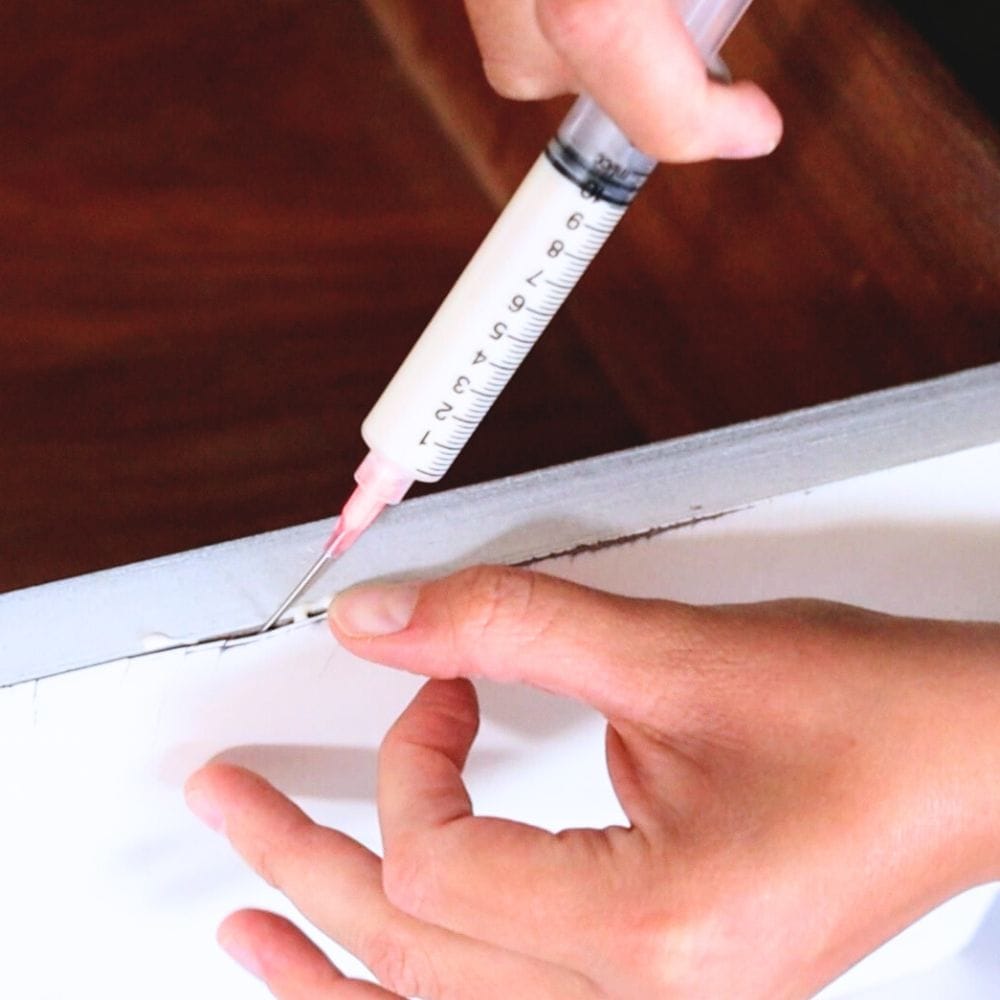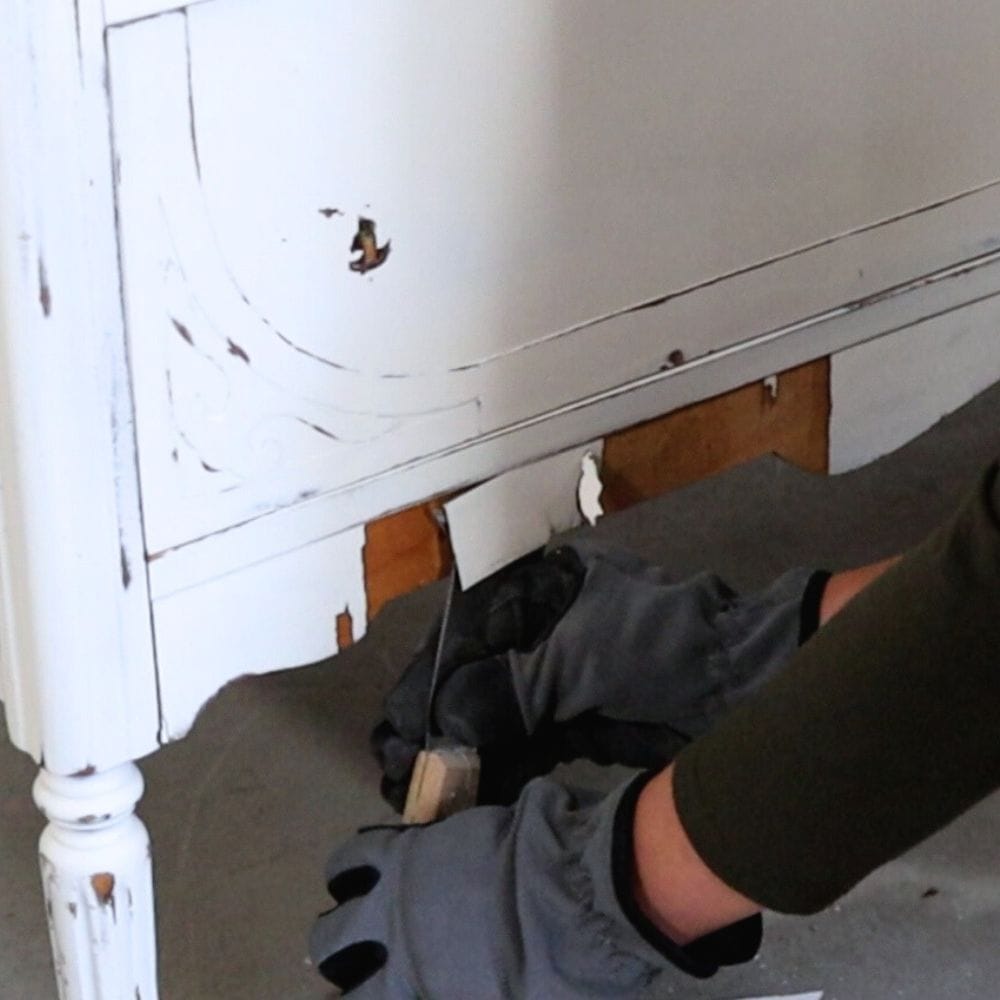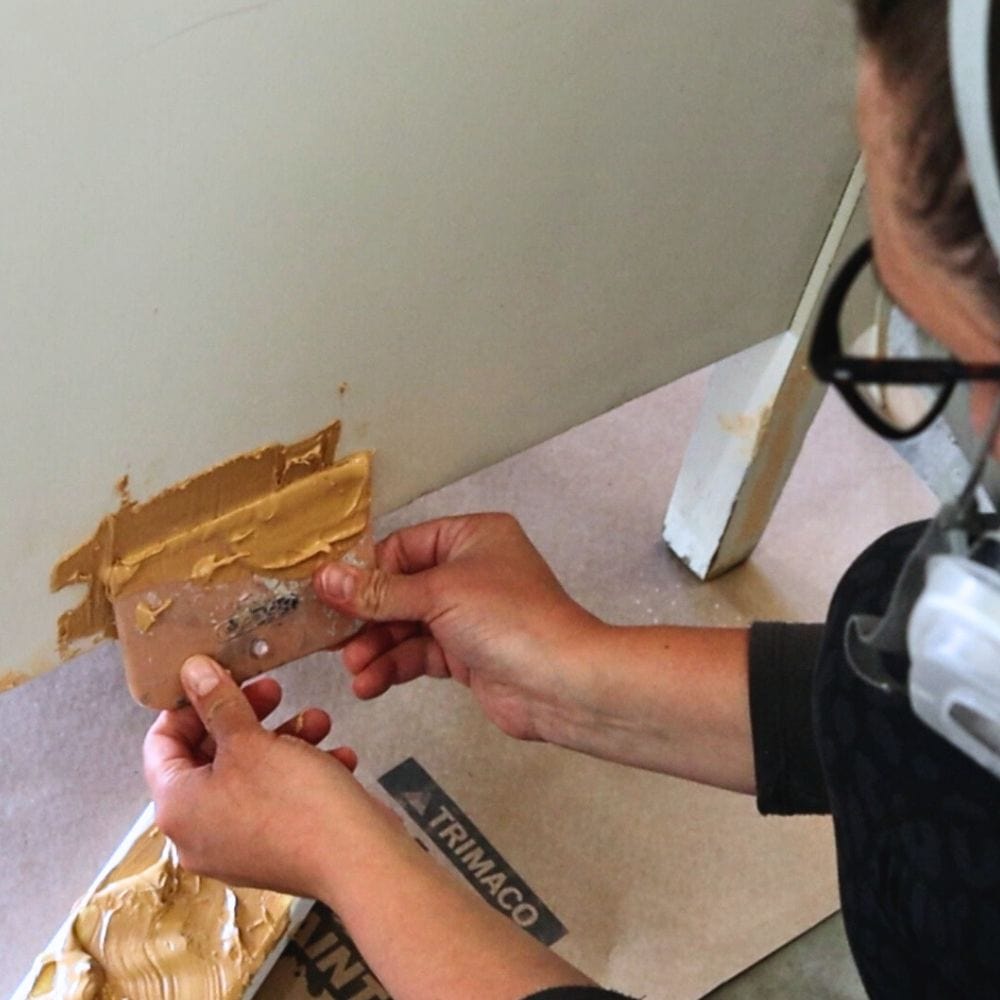How To Fix Veneer That Is Lifting
If you have old furniture with veneer, you may have noticed that over time, the veneer can start to lift or chip off. In this guide, we will show you step-by-step methods on how to fix veneer that is lifting, so you can repair old furniture and give it a fresh new look.
Whether the veneer is lifting in small areas or large sections, we have solutions for both scenarios. Follow these tips to keep your furniture looking its best for years to come!

Wood veneer is a thin layer of real wood that is applied to the surface of furniture, doors, and cabinets. It is often used as a cost-effective way to get the look of solid wood without the high price tag.
Veneer can come in a variety of wood types, finishes, and styles to match any design aesthetic.
But again, over time and with exposure to various elements, veneer can start to lift. This can be due to changes in temperature and humidity, or simply from wear and tear. No worries, with the right tools and techniques, you can easily fix veneer that’s lifting!
Supplies Used for Fixing Lifting Veneer
As an Amazon Associate, I earn from qualifying purchases. I also may earn from other qualifying purchases with other companies or get free product to review and use. All opinions are my own.
- Gorilla Wood Glue
- Clamps
- Glue Syringe
- Damp Towel
- Hot Iron or Heat Gun/Hair Dryer
- Metal Scraper
- Hammer (optional)
- Power Sander or Wood Planer (optional)
- Bondo Wood Filler
- 220 Grit Sandpaper
Why Fix Lifting Veneer on Furniture?
You may be wondering why it’s necessary to fix lifting veneer on your furniture. Besides the obvious reason of wanting your furniture to look its best, there are a few other reasons why it’s important to repair damaged veneer.

If you leave it untreated, lifting veneer can cause more extensive damage and potentially ruin the furniture completely. By fixing it early on, you can prevent further damage and avoid having to replace the entire piece.
Lifting veneer can create sharp edges or splinters, which can be risky, especially with kids around. By repairing the veneer, you’ll prevent any potential injuries and keep your furniture safe. Plus, it’ll make your furniture last longer and save you money in the long run.
How to Fix Lifting Veneer in Small Areas
Start by gently lifting up the veneer to expose the underlying surface. Apply a small amount of Gorilla Wood Glue to the exposed surface using a glue syringe.
This will allow you to apply the glue precisely and without making a mess. Check out the best glue for repairing wood furniture here.

Next, carefully press down on the veneer to evenly distribute the glue underneath. Use clamps to hold the veneer in place while the glue dries completely. Leave the clamps on for at least 24 hours before removing them to make sure the veneer stays securely in place.
Trigger clamps are awesome for fastening jobs. You can check out these Dewalt medium and large trigger clamps that I’ve been using for years!
How to Fix Lifting Veneer in Multiple Places and Large Areas
If the veneer is lifting in multiple places and over a large area, it may be best to remove the veneer completely. To remove veneer, you can try this method: put a damp towel over the area for around two hours.
You can also speed things up a bit by spraying some water on the wood veneer before even placing the towel on top.
Next, grab a hot iron and use it to heat up the damp towel.

This will help loosen the glue holding the veneer in place. Carefully lift the veneer with a metal scraper until it’s fully removed. After that, give the exposed wood a good sanding to get it ready for replacement veneer or a fresh new finish.
If the veneer is still not coming off after trying other methods, there are a few more tricks you can try. Using a heat gun or hair dryer to soften the glue before using a metal scraper can be effective.
Another option is to use a hammer and metal scraper, but this may cause some damage to the wood underneath. If you have a power sander or wood planer, these tools can also help remove stubborn veneer.
However, be prepared to spend some time sanding through multiple layers of veneer.
How to Repair Chipped Veneer Edges
Chipped veneer edges can be unsightly and can also lead to further damage if not addressed. The good news is that it’s an easy fix with Bondo Wood Filler. Here’s my honest Bondo wood filler review to learn more about my personal experience when using this product.
First, gently remove the loose veneer from the chipped area. Then give that area a light sanding with 220 grit sandpaper to help the wood filler adhere better.

Next, go ahead and mix the Bondo base and hardener together following the instructions. Just remember to mix a small amount at a time since it dries pretty fast.
Apply the wood filler over the damaged area, making sure to slightly overfill it so you can sand it down later to match the surrounding wood. Let it dry for about 30 minutes, then grab some sandpaper and smooth down the wood filler.
Here’s everything you need to know about Bondo wood repair for your furniture.

You can check out our post on repairing veneer with wood filler for a more detailed guide on the process.
Check out this detailed guide on how to repair veneer edging here.
Can I fix lifting veneer without clamps?
Clamps are a must-have for securing lifting veneer to make sure the glue dries evenly and holds the veneer in place. If you don’t have clamps, you can use heavy books or objects to weigh down the area while the glue does its thing.
Can I just cover up chipped veneer with paint?
While it may be tempting to cover up any imperfections with paint, we recommend properly fixing and repairing the damaged veneer first.
It just honestly does not look good when you paint over damaged wood. The paint will not hide the problem.
Learn all about the basics of painting veneer furniture for a successful makeover project here.
Fixing lifting veneer is a super easy and budget-friendly way to make your furniture last longer and keep it looking amazing.
By knowing the various techniques and supplies used, you can totally tackle any lifting veneer issue yourself!
More Repairing Furniture Tips
- How to Repair Chipped Veneer Furniture
- How to Repair Bubbled Veneer
- Best Way to Fix Chipped Wood Furniture
- Cane Furniture Repair
- Repair Water Damaged Wood
Follow us on YouTube to get more tips for painting furniture.
Or share your project with us on our Facebook Group and be part of our community. See you there!
